COMPANY PROFILE
RIDEX AG Schwitzerland
COURT OF LAW.
RIDEX AG is a Global Contracting, Trading and Procurement Company. With discipline and ethics, RIDEX AG possesses thorough understanding of the global procurement and trading market gained through our business experience.
To ensure success RIDEX AG has a global procurement network with offices in many countries around the world and in order to provide our customer with a quality product at competitive prices, we established companies in the strategic global markets.
RIDEX AG is combed to consistent pursuit of excellence dedicated to continually improving our business to provide our customers with services that fully satisfy the customer’s requirements.
This comment RIDEX AG ensures high standards in quality and reliability of our projects & services, with strict adherence to client requirements and policies and resourceful work force in being the most trusted service provider, creating “Delighted Customer”'.
Our professional team of employees possesses the expertise and clear-cut understanding to evaluate and assess client requirements in any strategic area. According to our clients & customer objectives, we provide excellent customer service & feedback throughout the entire Supply Chain cycle.
Our Vision is to provide our clients with highest standard services to include abiding by our word to follow through on our promises and comment RIDEX AG. We believe that exceeding our clients and customers expectation at every given opportunity is the only path to our mutual success and long lasting business relation.
RIDEX AG, is a Supply Chain Specialist Company. Mrs. YULIIA NOVYTSKA, CEO/Owner with her experience in the industry spearheads this Company for almost two decades, supported by their premium client from all over the world.
Mrs. YULIIA NOVYTSKA has numerous awards in this field. she has established a well dedicated and well experienced team with ample knowledge of sourcing the best products at best prices within short period is the driving force for the foundation of RIDEX AG Worldwide.
Power engineering, also called power systems engineering, is a subfield of electrical engineering that deals with the generation, transmission, distribution and utilization of electric power, and the electrical apparatus connected to such systems. Although much of the field is concerned with the problems of three-phase AC power – the standard for large-scale power transmission and distribution across the modern world – a significant fraction of the field is concerned with the conversion between AC and DC power and the development of specialized power systems such as those used in aircraft or for electric railway networks. Power engineering draws the majority of its theoretical base from electrical engineering.
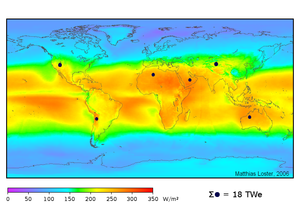
Solar power is the conversion of energy from sunlight into electricity, either directly using photovoltaics (PV), indirectly using concentrated solar power, or a combination. Concentrated solar power systems use lenses or mirrors and tracking systems to focus a large area of sunlight into a small beam. Photovoltaic cells convert light into an electric current using the photovoltaic effect.
RIDEX AG & «GSA» LLP expresses you the respect and wishes you professional success. Within joint cooperation the RIDEX AG & «GSA» LLP companys has opportunity to offer you designing, supply of equipment, performance of works on installation, adjustment, warranty and post warranty maintenance of equipment for telecommunication subsystems, automation and energy. The RIDEX AG & «GSA» LLP companys arranges all license types and certificates (Design and survey activities, installation and construction works, ISO 9001-2008 - quality management system, OHSAS 18001-2008 - management system of labor safety and health protection.combination. Concentrated solar power systems use lenses or mirrors and tracking systems to focus a large area of sunlight into a small beam. Photovoltaic cells convert light into an electric current using the photovoltaic effect.
Hereby we express our sincere and deep esteem and kind interest in a mutually beneficial partnership!
We kindly ask you to consider the Plan of the partnership with RIDEX AG & GSA Companys on the development of new solar power plants (SPP) construction projects in Ukraine.
Currently, Ukraine has the significantly favorable environment and conditions for investing in Green Energy.
There are possibility to develop the Projects for the construction of solar power plants with a total capacity up to 250 MW. It is possible too to build solar power plants stage-by stage (with capacity of each stage >25 MW).
«To provide the construction sites; to solve all the necessary political and technical issues; to provide legal local support; to offer the turn-key construction works on terms, costs and conditions agreed in advance with the Investor. Maintenance of the Project at all stages».
After coordination with the Investor the RIDEX AG & GSA receives the payment for the development of the Project, and if it agreed too – as the General Contractor and/or the Contractor according to the Table 1 below.
|
№ |
Investor’s activities |
Cost, |
Responsibility of the RIDEX AG & GSA |
|---|---|---|---|
|
1 |
Prepayment for the beginning of the Partnership |
50 000 € |
Single payment. In 2 weeks after payment RIDEX AG Switzerland provides the most effective potential sites Project realization |
|
2 |
Payment for opening of the Company for the each Project bigger than 25 MW |
10 000 € |
RIDEX AG transfers the 100 % shares of the new Company to the Investor for each new site |
|
3 |
Payment for the arrangement of the land lease |
4 000 €/MW |
Land lease Governmental document |
|
4 |
Receiving of the technical conditions (permissions) for the connection to the Grid |
8 000 €/MW |
Technical conditions (for the connection to the grid) |
|
5 |
Payment due to fact of the signing of the PPA |
2 000 €/MW |
PPA (Power Purchase Agreement, Fit = 0,15€/kW without VAT) |
|
6 |
Payment for the Pre-Feasibility Study |
1 000 €/MW |
RIDEX AG & GSA develops the Pre-Feasibility Study for chosen Project |
|
7 |
Bonus for successful organization of the Project |
15 000 €/MW |
RIDEX AG & GSA provides above mentioned package of the document for the construction |
|
8 |
Cost of the EPC, turn-key |
870 000 €/MW |
RIDEX AG & GSA provides all engineering, construction and commissioning works for the Project (7-12 months) |
The main equipment will be used based on highest profit ratio with the guarantee of generating electricity for the period of operation. For today, we have close partnership and contacts with the following manufacturers:










A substation is a part of an electrical generation, transmission, and distribution system. Substations transform voltage from high to low, or the reverse, or perform any of several other important functions. Between the generating station and consumer, electric power may flow through several substations at different voltage levels. A substation may include transformers to change voltage levels between high transmission voltages and lower distribution voltages, or at the interconnection of two different transmission voltages
Substations may be described by their voltage class, their applications within the power system, the method used to insulate most connections, and by the style and materials of the structures used. These categories are not disjointed; for example, to solve a particular problem, a transmission substation may include significant distribution functions
A transmission substation connects two or more transmission lines.[2] The simplest case is where all transmission lines have the same voltage. In such cases, substation contains high-voltage switches that allow lines to be connected or isolated for fault clearance or maintenance. A transmission station may have transformers to convert between two transmission voltages, voltage control/power factor correction devices such as capacitors, reactors or static VAR compensators and equipment such as phase shifting transformers to control power flow between two adjacent power systems.
Transmission substations can range from simple to complex. A small "switching station" may be little more than a bus plus some circuit breakers. The largest transmission substations can cover a large area (several acres/hectares) with multiple voltage levels, many circuit breakers, and a large amount of protection and control equipment (voltage and current transformers, relays and SCADA systems). Modern substations may be implemented using international standards such as IEC Standard 61850.
A distribution substation transfers power from the transmission system to the distribution system of an area.[2] It is uneconomical to directly connect electricity consumers to the main transmission network, unless they use large amounts of power, so the distribution station reduces voltage to a level suitable for local distribution.
The input for a distribution substation is typically at least two transmission or sub-transmission lines. Input voltage may be, for example, 115 kV, or whatever is common in the area. The output is a number of feeders. Distribution voltages are typically medium voltage, between 2.4 kV and 33 kV, depending on the size of the area served and the practices of the local utility. The feeders run along streets overhead (or underground, in some cases) and power the distribution transformers at or near the customer premises.
In addition to transforming voltage, distribution substations also isolate faults in either the transmission or distribution systems. Distribution substations are typically the points of voltage regulation, although on long distribution circuits (of several miles/kilometers), voltage regulation equipment may also be installed along the line.
The downtown areas of large cities feature complicated distribution substations, with high-voltage switching, and switching and backup systems on the low-voltage side. More typical distribution substations have a switch, one transformer, and minimal facilities on the low-voltage side.
In distributed generation projects such as a wind farm, a collector substation may be required. It resembles a distribution substation although power flow is in the opposite direction, from many wind turbines up into the transmission grid. Usually for economy of construction the collector system operates around 35 kV, and the collector substation steps up voltage to a transmission voltage for the grid. The collector substation can also provide power factor correction if it is needed, metering, and control of the wind farm. In some special cases a collector substation can also contain an HVDC converter station.
Collector substations also exist where multiple thermal or hydroelectric power plants of comparable output power are in proximity. Examples for such substations are Brauweiler in Germany and Hradec in the Czech Republic, where power is collected from nearby lignite-fired power plants. If no transformers are required for increasing the voltage to transmission level, the substation is a switching station.
Converter substations may be associated with HVDC converter plants, traction current, or interconnected non-synchronous networks. These stations contain power electronic devices to change the frequency of current, or else convert from alternating to direct current or the reverse. Formerly rotary converters changed frequency to interconnect two systems; nowadays such substations are rare.
A switching station is a substation without transformers and operating only at a single voltage level. Switching stations are sometimes used as collector and distribution stations. Sometimes they are used for switching the current to back-up lines or for parallelizing circuits in case of failure. An example is the switching stations for the HVDC Inga–Shaba transmission line.
A switching station may also be known as a switchyard, and these are commonly located directly adjacent to or nearby a power station. In this case the generators from the power station supply their power into the yard onto the Generator Bus on one side of the yard, and the transmission lines take their power from a Feeder Bus on the other side of the yard.
An important function performed by a substation is switching, which is the connecting and disconnecting of transmission lines or other components to and from the system. Switching events may be planned or unplanned. A transmission line or other component may need to be de-energized for maintenance or for new construction, for example, adding or removing a transmission line or a transformer. To maintain reliability of supply, companies aim at keeping the system up and running while performing maintenance. All work to be performed, from routine testing to adding entirely new substations, should be done while keeping the whole system running.
A railway electrification system supplies electric power to railway trains and trams without an on-board prime mover or local fuel supply. Electric railways use electric locomotives to haul passengers or freight in separate cars or electric multiple units, passenger cars with their own motors. Electricity is typically generated in large and relatively efficient generating stations, transmitted to the railway network and distributed to the trains. Some electric railways have their own dedicated generating stations and transmission lines but most purchase power from an electric utility. The railway usually provides its own distribution lines, switches and transformers.
Tower structures can be classified by the way in which they support the line conductors. Suspension structures support the conductor vertically using suspension insulators. Strain structures resist net tension in the conductors and the conductors attach to the structure through strain insulators. Dead-end structures support the full weight of the conductor and also all the tension in it, and also use strain insulators.
Structures are classified as tangent suspension, angle suspension, tangent strain, angle strain, tangent dead-end and angle dead-end. Where the conductors are in a straight line, a tangent tower is used. Angle towers are used where a line must change direction.
An overhead power line is a structure used in electric power transmission and distribution to transmit electrical energy along large distances. It consists of one or more conductors (commonly multiples of three) suspended by towers or poles. Since most of the insulation is provided by air, overhead power lines are generally the lowest-cost method of power transmission for large quantities of electric energy.
The aerial cables that carry high-voltage electricity and are supported by large pylons are generally considered an unattractive feature of the countryside. Underground cables can transmit power across densely populated or areas where land is costly or environmentally or aesthetically sensitive. Underground and underwater crossings may be a practical alternative for crossing rivers.
If you are seeking general contracting, construction management, design/build or pre-engineered renewable energy sector, then RIDEX AG is the right choice for your next project. Our diverse portfolio includes not only industrial, commercial and hospitality, but institutional, ENERGY, transportation and governmental projects as well. Our projects are located in many countries abroad. No matter how challenging a project is, or how remote its location, chances are RIDEX AG can handle it. Employing an unmatched combination of knowledge, skill, experience, integrity and commitment to the needs of the customer, our services have helped grow local economies and improve the quality of life in numerous communities. Quality, safety and a focus on constructing sustainable buildings are the keystones of our corporate culture.We do it right the first time.
The company’s strategy assumes extension of the existing capacities and development of new facilities in various segments of the renewable energy sources market.
For over 15 years RIDEX AG has provided construction services to local, state, and federal government agencies. as correctional facilities, city halls, libraries, justice centers and research and development facilities nationwide. Our in-house technical capabilities, project management tools, dedication to safety, commitment to sustainability and financial strength create a strong building partner that delivers the highest quality product at the best value for the public.
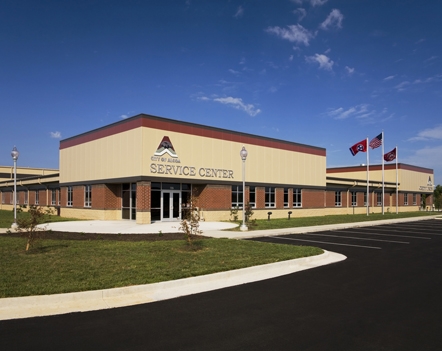
Cost, quality, safety and schedule are the benchmarks of any successful commercial project. The construction professionals at RIDEX AG are dedicated to providing superior services on every project we undertake, and ultimately, exceeding your expectations. We are builders that constantly seek innovative solutions to the complexities of commercial construction by managing every aspect of your project – from groundbreaking through ribbon cutting. Whether you are pursing LEED certification for your project or planning something as unique as the Center for Nanophase Material Sciences, we can provide the expertise to get the job done. Our decades of commercial experience include Solar power plants, Hydroelectric power stations, Thermal power station, office buildings, cinemas, retail centers, museums, hotels, parking garages, corporate headquarters, and financial institutions.
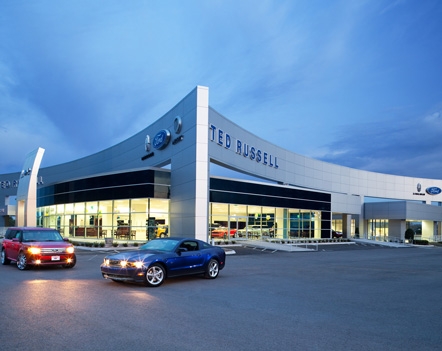
From secondary schools to university level educational facilities, world class aquatic centers, student housing facilities, libraries, arenas and stadiums, RIDEX AG is a leading institutional construction company. Involving staff, administrators and maintenance personnel in the planning and scheduling process for an on-campus construction project is key to ensuring a safe, high quality product, completed on time, within budget and with minimum disruption to the staff, students and the general public.
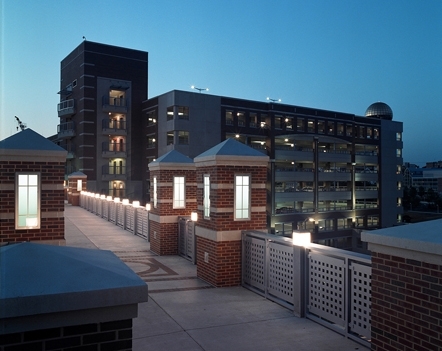
The Building Systems division at RIDEX AG Construction has the unique ability and expertise to provide in-house design, engineering, fabrication, and erection services for large pre-engineered, hybrid and conventional steel buildings. Over the last 15 years we have constructed millions of square feet of industrial, warehousing, distribution, manufacturing and power generating facilities.
We also design, fabricate, and export complete steel building packages to customers around the world. Our dedication to safety, a lack of geographic limitations and an experienced staff have positioned RIDEX AG Construction as one of the leading steel building contractors, Engineering and procurement.
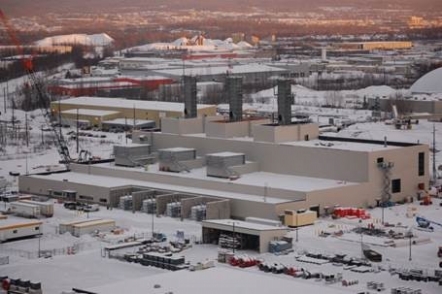
RIDEX AG Construction’s industrial projects from a retail distribution center to a Solar power plant, to an aluminum smelting facility, RIDEX AG has successfully built millions of square feet of industrial projects. Whether it is a manufacturing facility, distribution center, warehouse, aircraft hangar, turbine hall or waste recovery project, RIDEX AG Construction has the experienced staff to safely manage and construct your next project…on time, and within budget.
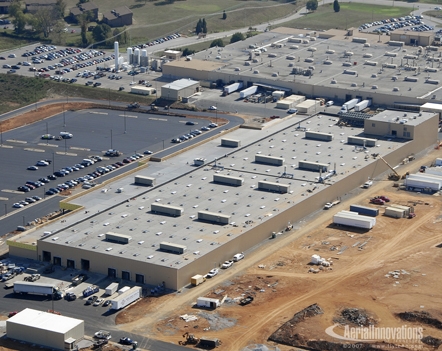
"ALL SUPPLY SCHEDULING TAILORED TO MEET THE CLIENT OR CONTRACTUAL REQUIREMENT"
In today's ever-changing market logistical support to procurement activities are critical to provide timely and professional solutions. RIDEX AG have built up an extensive transport network throughout all over the world.
Our experience, resources, stability, and integrity as well as our company mission consistently enable us to maximize client satisfaction.
Our logistics system includes warehouses to ship and receive items. To expand on our logistics capabilities, we have established a new company that will be responsible for all global logistics operations to make sure our products reach our customer on time. This adds exceptional value that to when bring our clients an accomplished record of accomplishment of successful project shipments, comprehensive communication with our logistics professionals in office and field locations across the globe.
Through a careful analysis of business requirements, cost drivers, service differentiators, facility
infrastructure, and system capabilities, RIDEX AG can custom design, implement, and manage a supply chain solution tailored to your specific needs. We offer customer specific supply chain solutions.
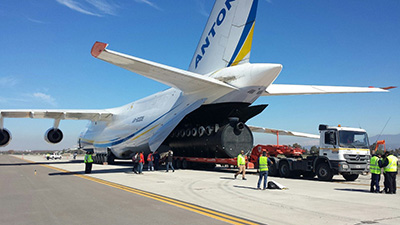
• Transportation of "awkward loads" quickly
• Use of well-known public air carriers to guarantee timely and cost-effective delivery for smaller loads
• Aircraft charters including DC-8's, DC-10’s, and a range of Antonov's dependent on load requirement and specific need. DISCLOSE TO ANY OTHER PARTY, RIDEX AG
• Extensive in country knowledge to provide administration support including, but not lied to, customs clearance, and forwarding.
• Airlift and subsequent delivery from and to any locality worldwide
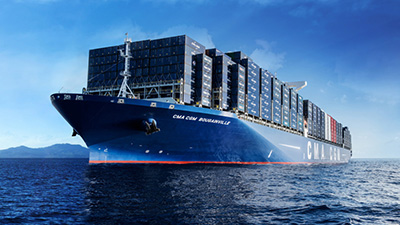
• Time Critical cargo transport solutions
• Break bulk and flat rack solutions for "out of gauge" items
• Vessel Chartering
• Containerized shipping solutions for complete 20', 40' and 45' container loads and LCL cargo for smaller, less time critical loads.
• Extensive in country knowledge to provide administration support including, but not lied to, customs clearance, and forwarding.
• Shipping and subsequent delivery from and to any locality worldwide
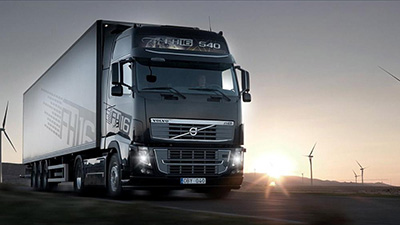
• Internal distribution of cargo country wide and across land boarders where applicable
• Used both in conjunction and independently of the above transport mediums.
• High knowledge level of trucking markets to supply cost effective transportation.
• Extensive in country knowledge to provide administration support including, but not lied to, customs clearance, and forwarding.
• Land transportation and subsequent delivery from and to any locality worldwide
For creation of intellectual and innovative solutions the RIDEX AG company cooperates more than with 50 leading global manufacturers of the equipment and the software. High level of the personnel, fine knowledge of industries development technologies and trends, excellent examination in various vertical steel markets important competitive difference of RIDEX AG.


















